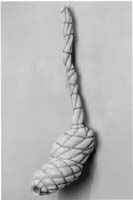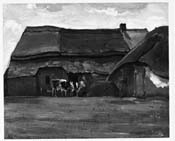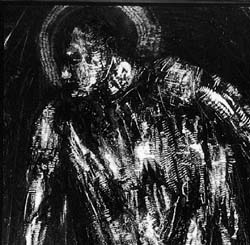
An important part of the Allen Memorial Art Museum's mission continues to be helping transform students into connoisseurs, training them to make determinations about aesthetic issues of quality. But, as museum director Anne Moore points out, all art museums would say that they deal in issues of quality. How then, as a subset of museums--a teaching art museum--does the AMAM define itself?
In all of its undertakings the museum strives to challenge faculty and students, says Moore, to continue to engage them in ways pertinent to their intellectual pursuits. Before they undertake any project, exhibition, or acquisition, museum staffers first ask themselves, "How is this initiative aesthetically pleasing?" Then they ask, "How will it challenge students? In how many contexts is it pertinent?"
Their efforts are beginning to pay off. More and more faculty from various disciplines have been availing themselves of the collection, using it as a teaching resource. But what distinguishes a teaching collection from other collections?
The AMAM's is a less capricious collection than that of many museums, says Moore, a well-rounded selection of challenging, difficult pieces. And while she hastens to add that beauty, however the concept is defined, has always been and remains an important part of the acquisitions process, intellectual rigor is just as highly prized by the AMAM.

The abstracted, seemingly organic forms of Peter Shelton's bulgebone , for instance, conjure up a range of bodily reference. When installed, the translucent form extends from the wall, dangling above the floor like an exposed organ. The linguistic, visual, and even aural connections that the work evokes are part of its physical impact.

The museum's collection is also unusually strong in artists' early works--the seeds of their mature work--a circumstance appropriate for a museum whose primary audience are young people poised to embark on their lives' work. An early Mondrian landscape--Brabant Farmyard --looks unlike anything people have come to expect from the artist. A direct descendant of the 19th-century Dutch landscape tradition, the painting nevertheless reveals elements that harken to the precise geometry of Mondrian's mature work.
The foundation laid by curators and art faculty of years past have left Oberlin with a legacy to which today's curators and faculty are committed to maintaining and enhancing. "We look very closely at the curriculum of the College to determine in which areas we collect," says Moore, an effort that has led the museum to focus a good portion of its energies in seeking out high-quality non-Western works of art.

Arnoldo Roche-Rabell's Man in the Dark is an example of a work that would probably have gone unnoticed under the Eurocentric traditions employed even a generation ago. Yet, with its strong, bold colors and passionate rendering of the human form, "it is an absolutely riveting image," says Amy Kurlander, curator of modern and contemporary art. "An intense, original work of expressionistic painting," Man In the Dark is an important addition to the museum's collection of expressionistic works, which is almost entirely comprised of early 20th-century pieces by European artists.
"Our number one agenda is to have this collection contribute to the entire College," says Moore.
"Visual imagery not only reflects, it can shape and define society. Ours is an unparalleled resource, and it can help the historian, the philosopher, and the mathematician as much as the artist and art historian."
--Cynthia Nickoloff '88